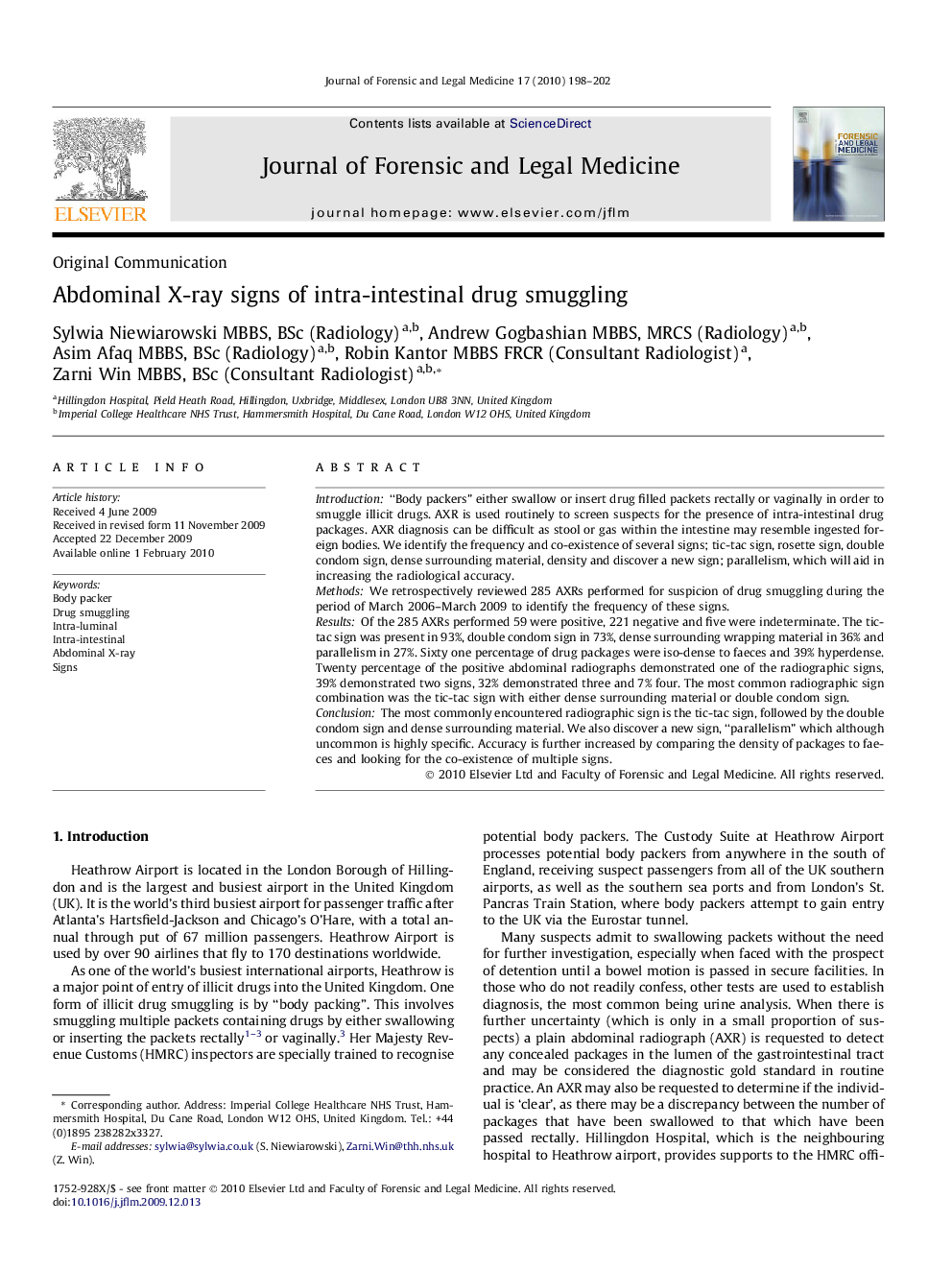| Article ID | Journal | Published Year | Pages | File Type |
|---|---|---|---|---|
| 102648 | Journal of Forensic and Legal Medicine | 2010 | 5 Pages |
Introduction“Body packers” either swallow or insert drug filled packets rectally or vaginally in order to smuggle illicit drugs. AXR is used routinely to screen suspects for the presence of intra-intestinal drug packages. AXR diagnosis can be difficult as stool or gas within the intestine may resemble ingested foreign bodies. We identify the frequency and co-existence of several signs; tic-tac sign, rosette sign, double condom sign, dense surrounding material, density and discover a new sign; parallelism, which will aid in increasing the radiological accuracy.MethodsWe retrospectively reviewed 285 AXRs performed for suspicion of drug smuggling during the period of March 2006–March 2009 to identify the frequency of these signs.ResultsOf the 285 AXRs performed 59 were positive, 221 negative and five were indeterminate. The tic-tac sign was present in 93%, double condom sign in 73%, dense surrounding wrapping material in 36% and parallelism in 27%. Sixty one percentage of drug packages were iso-dense to faeces and 39% hyperdense. Twenty percentage of the positive abdominal radiographs demonstrated one of the radiographic signs, 39% demonstrated two signs, 32% demonstrated three and 7% four. The most common radiographic sign combination was the tic-tac sign with either dense surrounding material or double condom sign.ConclusionThe most commonly encountered radiographic sign is the tic-tac sign, followed by the double condom sign and dense surrounding material. We also discover a new sign, “parallelism” which although uncommon is highly specific. Accuracy is further increased by comparing the density of packages to faeces and looking for the co-existence of multiple signs.
